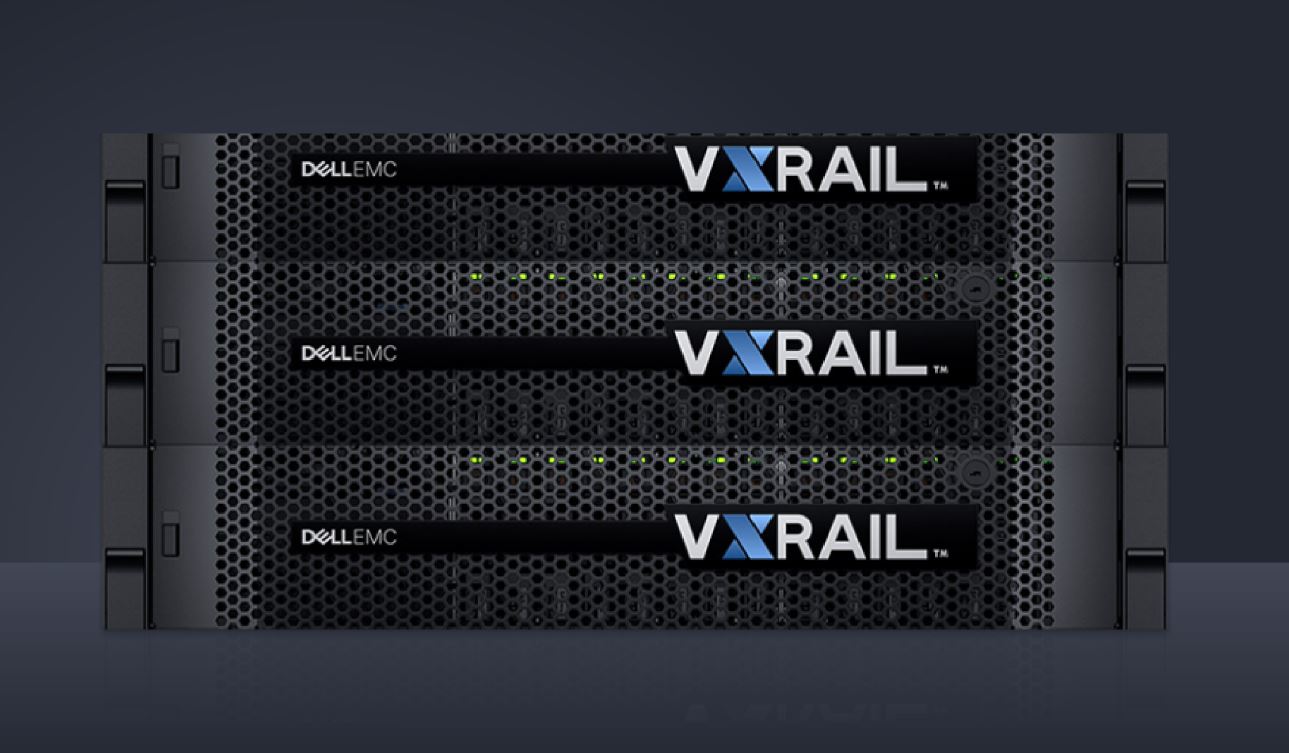 INFRA
INFRA
 INFRA
INFRA
 INFRA
INFRA
Dell Technologies Inc. is beefing up its VxRail hyperconverged infrastructure and adding an option for users to incorporate external third-party storage with a series of announcements tonight.
The highlight of the multipart announcement is to “simplify operations and deployment from day zero through day two,” said Nancy Hurley, senior manager of program management for Dell’s HCI/CI products. “The big news is self-deployment.”
That’s being done with system software enhancements that give customers greater control over installation with self-service tools that they can use to validate, orchestrate and automate cluster deployment on their own schedule. Other new software capabilities allow users to redeploy or reallocate nodes dynamically within clusters for better utilization and performance.
Continuously validated states “ensure that clusters are always ready and always ready for the next upgrade,” Hurley said. That’s done through a compatibility matrix and ecosystem connectors that enable Dell “to ensure that any time you have an upgrade you’re in a continually validated state,” she said. “We perform over 25,000 hours of tests on all the different components to be sure that if you are doing upgrades everything has been tested and sequenced. You can truly just push a button and upgrade.”
The result is a “fully curated experience,” she said. “There’s automatic detection and it takes five minutes to add a new node into a cluster.” Lifecycle management features in the system software also enable older clusters to be integrated with new ones with automatic recognition of firmware and software. “It’s pushbutton lifecycle management regardless of the generation of the node,” Hurley said. The self-deployment options will be available in North America through an early access program beginning in August.

Dell EMC VxRail PV Series Photo: Dell
Dell touts VxRail as the only HCI system that was jointly engineered with VMware for VMware environments. The VxRail product line was the market share leader in the fourth quarter of 2020, with nearly one-third of industrywide HCI revenues, according to International Data Corp.
The enhanced VMware integration is also intended to reinforce the strength of Dell’s relationship with its virtualization subsidiary despite its plans to spin off VMware later this year. In September, Dell announced plans to integrate VxRail with VMware’s Tanzu modernization software. Earlier, the company said customers can deploy VMware Cloud Foundation software-defined infrastructure platform on VxRail using a consolidated, four-compute node architecture to support multiple, general-purpose virtualized workloads.
Dell also said it’s imbuing its HCI platform with the latest Dell EMC PowerEdge servers in July with the incorporation of Intel Corp.’s 3rd Generation Xeon processors, which boost performance thanks to 42% more cores than previous generations. An Intel Optane persistent memory 200 series option increases bandwidth by 32% on average, the company said.
Beginning this month, there’s also a new option for VxRail buyers to use the 3rd Generation Advanced Micro Devices Inc. Epyc processors, which scale to 64 cores per processor. And the VxRail V Series can now be bought with Nvidia Corp.’s A40 or A100 Tensor Core graphics processing units, which are popular in machine learning applications. The number of PCIe slots in the VxRail E Series has been hiked by half as well.
Customers are also getting a little more flexibility to integrate external storage into VxRail systems with the introduction of VxRail dynamic nodes, which will come without integrated storage when they ship in August. That enables the nodes to access external storage by sharing storage capacity across clusters with VMware’s vSAN HCI Mesh.
“This enables more efficient usage of storage,” Hurley said. “If there’s unused storage in an existing VxRail cluster, we can create a dynamic compute cluster that points to it. Or there may be workloads that in the past customers wanted to keep in storage arrays. This lets them have that external storage attached as primary storage and still use the operational model you get with VCF on VxRrail.”
Support our mission to keep content open and free by engaging with theCUBE community. Join theCUBE’s Alumni Trust Network, where technology leaders connect, share intelligence and create opportunities.
Founded by tech visionaries John Furrier and Dave Vellante, SiliconANGLE Media has built a dynamic ecosystem of industry-leading digital media brands that reach 15+ million elite tech professionals. Our new proprietary theCUBE AI Video Cloud is breaking ground in audience interaction, leveraging theCUBEai.com neural network to help technology companies make data-driven decisions and stay at the forefront of industry conversations.